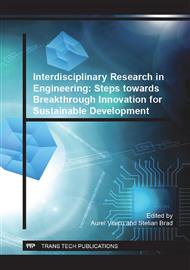p.361
p.370
p.379
p.389
p.397
p.405
p.413
p.421
p.437
Study of Permanent Magnet Synchronous Machine Topologies for Electric Scooter Application
Abstract:
The paper deals with the study of the motorization for an electric scooter. The motivation of this study is firstly introduced. Next, the application is defined: it is intended to propose a pure electrical traction system for a light electric vehicle, meaning an electric scooter). A short description of the design will introduce the main parameters of the electrical drive system and three topologies of electrical machine will be evaluated. The optimization of the best suited variant will be made based on a gradient type optimization algorithm. Numerical computation, by means of finite element method, will confirm the analytical obtained results, emphasizing the main achievements, performances and drawbacks of the electrical traction system. These performances are evaluated on test bench for validation.
Info:
Periodical:
Pages:
397-404
Citation:
Online since:
June 2013
Authors:
Permissions:
Share:
Citation:


